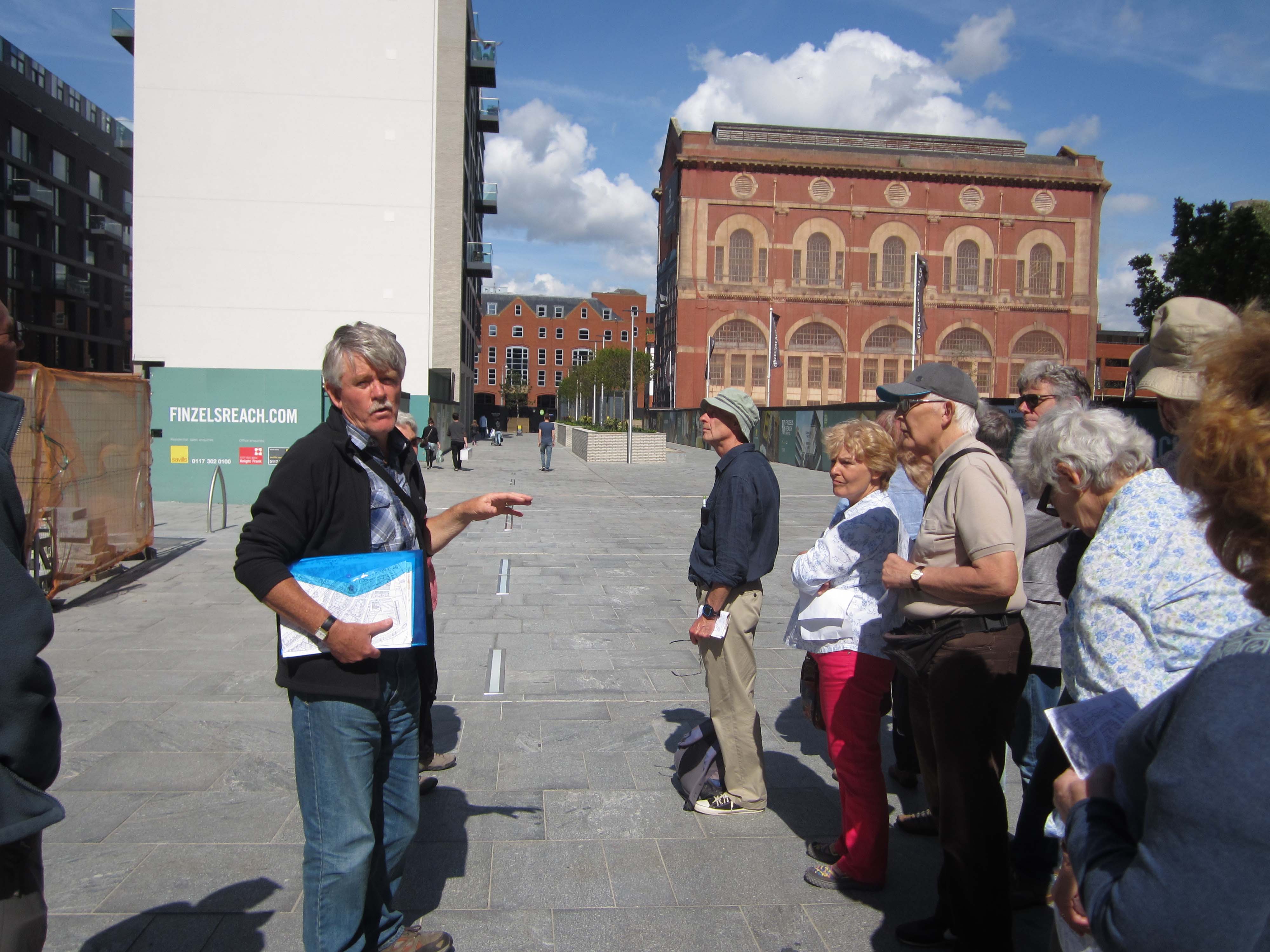
This was a talk about small scale industrial sites in the Medieval period using archaeological evidence, documents, personal names (Brewer, Dyer, Tucker), Probate inventories and Wills.
What does ‘industry’ really mean? Artefacts such as spindle whorls could be regarded as domestic activity, but this could be linked to a bigger group that sells produce on. In the 17th Century Redcliffe had lots of space, but activities would have been smelly with poultry around the street. No urine or stinking water was allowed to be thrown out of windows, but human excrement went straight into the R. Frome. Very precise excavation helps us to gain correct interpretations of the area, where areas were zoned with some industries that needed water (fishing, tanning, leather working) were by the river.
In Bristol, weavers, tanners, dyers and fullers were grouped in the Redcliffe/Temple area. Iron workers and ship building was outside the town walls at Narrow Quay; cutlers were on the R. Frome. The ‘Red Light’ district was at Gropers Lane; Cooks Row were butchers; goldsmiths and pewterers were in the central part of town.
At 2 Redcliff Street there were outbuildings, or small scale buildings behind a main dwelling house or shop front. Ashmead’s map of 1828 shows long properties with long, thin burgage plots. The Craft Guilds were very important and those not in the guild, such as Thomas Blanket who set up a weaving factory with un-guilded workers was initially allowed to do this. Eventually he lost out. The Guild had a very powerful force and had its own chapel (St. Catherine’s Chapel) inside the Temple Church.
By the 14th Century Bristol was exporting finished cloth to the Continent. We can see this in place names such as Rack Close (tenter-racks). This was an open area near Temple Church where 2 upright postholes were excavated. The archaeological evidence for early looms is slight, but by the 14th Century a 4 post loom might be found, together with spindle whorls.
At Redliff Street the water-logged material produced evidence of 3 tenements at DundasWharf where rubbish was dumped into the river to claim more land. Decayed madder root (red dye) fibres and blue woad fibres were found. Ordinances controlled the use of dyes and people left ‘pipes of woad’ to their relatives in Wills. At 2 Redcliff Street madder was found in a pit; there was a stone dye vat base. Up the street was evidence of barrel bases, suggesting tanning pits. By the 15-16th Centuries there was copper working and archaeological evidence and documents describe braziers. Several hearths were found for copper smelting and the remains of a copper working furnace was found, together with pottery moulds and crucibles.
At Broad Weir there is a line of 18th Century tanning pits, together with a 12th Century trough used for mixing mortar.
At Cabot Circus near the R. Frome and Broad Weir, are areas of industrial tanning. In the Union Street area is a 12th Century iron and copper working place. Smithing is hard to see in the archaeological record, but lumps of iron slap or a hearth might suggest it took place. At Redcliff Gate a lot of charcoal and metal slag was recovered suggesting a smithing hearth.
By the Post Medieval period near Bedminster Bridge (Boot Lane and Squires Court), documents tell us what was in these humble dwellings: there was a dense population living in back-to-back houses, with only a few having privies. In 2002 excavation discovered a pottery kiln.
